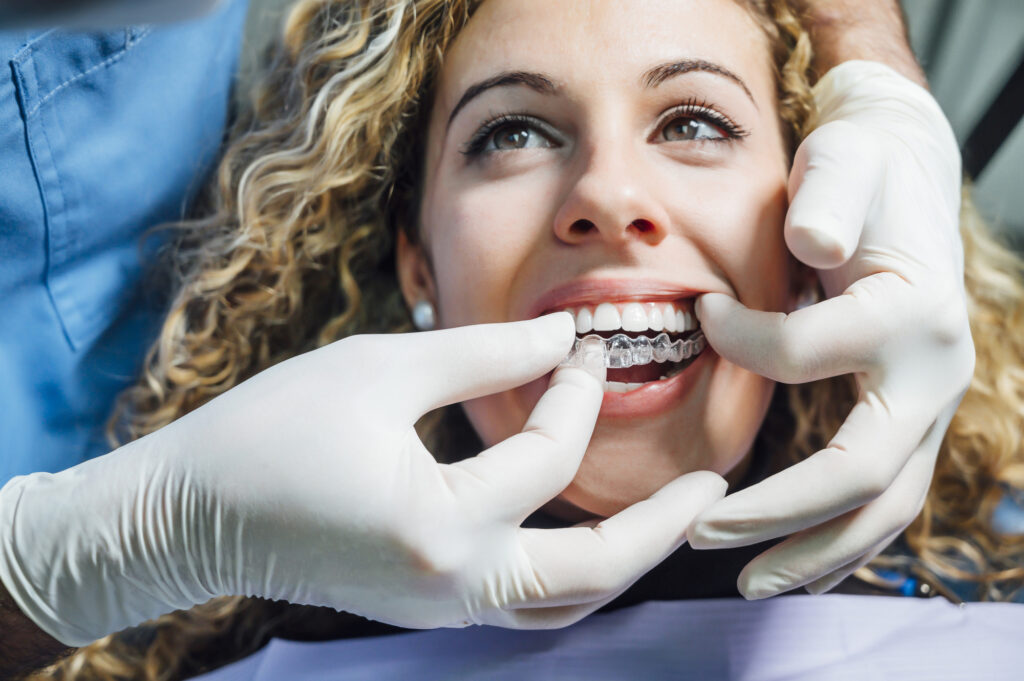
Clear aligners have completely changed how many people straighten their smiles. They offer a discreet and modern alternative to traditional braces, making them the top choice for many patients.
However, adapting to life with aligners still comes with its own set of challenges, especially in the initial weeks. So, let’s talk about making that transition more easily.
Understanding Clear Aligners
Unlike the extremely noticeable brackets and wires of braces, aligners are clear trays that fit over your teeth. Similar to something like a mouthguard but extremely thin in comparison, these trays are hardly noticeable when worn, even when you are looking closely. Removable aligner trays are switched out every couple of weeks, and each new tray is shaped slightly differently in order to progressively shift your teeth into place over time.
Tips for Navigating the First Weeks
The initial phase of wearing clear aligners is a critical period of adjustment for both your lifestyle and your mouth. During this time, you’ll learn to incorporate your aligners into your daily routine and understand how to care for them properly.
While this phase can be accompanied by discomfort and a bit of a learning curve, the right strategies can help.
Create a Routine
Adjusting to the routine of wearing, removing, and caring for your aligners can be challenging at first. However, establishing a routine early on will soon mean that you barely think about your aligners.
You will need to incorporate your aligner care into your morning and nighttime routine of brushing your teeth and getting ready. A consistent routine not only helps in adapting more quickly but also helps you to get the most out of your treatment.
Keep Them Clean
Keeping your aligners clean is as important for your oral health as brushing your teeth. Rinse your aligners every time you remove them to prevent plaque build-up and eliminate lingering bacteria. Use a soft-bristled toothbrush and clear, gentle soap to clean them. Avoid extremely hot water, as it can warp the plastic.
Prioritize Oral Hygiene
With aligners, it’s more important than ever to maintain your oral care routine. Try to always brush your teeth before putting your aligners back to prevent trapping food particles and bacteria against your teeth, which can lead to cavities and gum disease. If possible, carry a travel-sized toothbrush and toothpaste with you for convenience after meals.
Stay Hydrated, But Watch the Beverages
Staying hydrated is always good for your health, including tooth and gum health. However, when wearing clear aligners, the choice of beverage becomes more of an issue. Drinking anything other than water with your aligners in can lead to staining of the trays and an increased risk of tooth decay. Sugary and acidic beverages can seep into the aligners and stick next to teeth.
Always remove your aligners before enjoying such drinks, just like you would with food, and rinse your mouth before placing them back in.
Track How Long You Wear Them
The recommended wearing time is 20 to 22 hours a day, and it’s more important than you might think. Falling short of this can extend your treatment time and affect the final results. Use your phone or a timer or notes app to keep track of how long you’ve been wearing your aligners each day.
Expect Them to Feel Awkward
It’s normal for the aligners to feel tight initially. They may also cause some mild discomfort as your teeth begin to move. Over-the-counter pain relievers can ease this transition. Remember, this will be temporary and a sign that your treatment is working. Soon, you will get used to the aligners and barely notice them.
Practice Speaking
It’s not uncommon to notice some difficulty as you adjust to speaking with your aligners. Practice speaking aloud to expedite this adjustment period. Try singing along to some of your favorite music, reading aloud from a book, or having extended conversations with family members. This practice can help you get used to the presence of aligners and minimize any initial changes to your speech.
Use Aligner Removal Tools If Necessary
Some people find removing their clear aligners challenging, especially when new to the treatment. If you’re struggling, consider using an aligner removal tool. These specially designed tools can help you safely and easily remove your trays without putting too much stress on your teeth or fingernails.
Patience and Persistence
Adjusting to life with clear aligners might feel daunting during the first few weeks, but remember, persistence is key. As you adjust to your new clear aligners, remember that a bit of initial discomfort and inconvenience is a small price for the long-term benefits. Be assured that new habits take time to form, and soon, your aligner routine will feel like second nature.
Listen to Your Orthodontist’s Advice
When you get your aligners, you will be given care instructions to follow, but feel free to call with any questions. Attend all scheduled appointments so we can check on your progress.
If you’re considering clear aligner treatment or are looking for more guidance during your initial weeks, our team is here to support you. Reach out to us with your clear aligner questions at any time!





